Welcome to our list of the most popular “N” birds in the United States. I live in Missouri, and have seen most of the songbirds on this list at my feeders.
Pretty much everything on this page below the table is just general bird info.
Enjoy!
North American “N” Bird Species
| Image | Bird Species | Scientific Name | Range in North America | Migration | Male Plumage Description | Female Plumage Description |
|---|---|---|---|---|---|---|
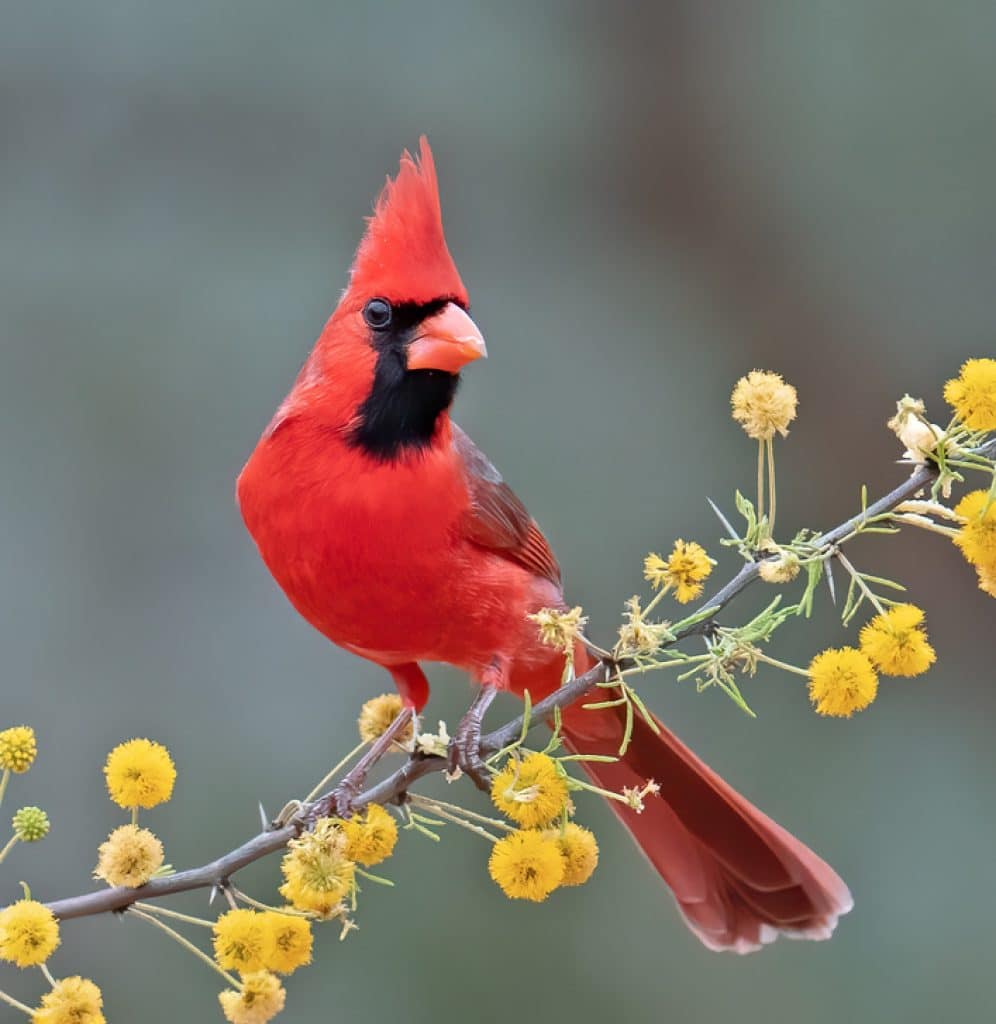 | Northern Cardinal | (Cardinalis cardinalis) | Eastern USA, Mexico, parts of Canada | Non-migratory | Bright red with a black face mask | Pale brown with reddish tinges, more subdued than males |
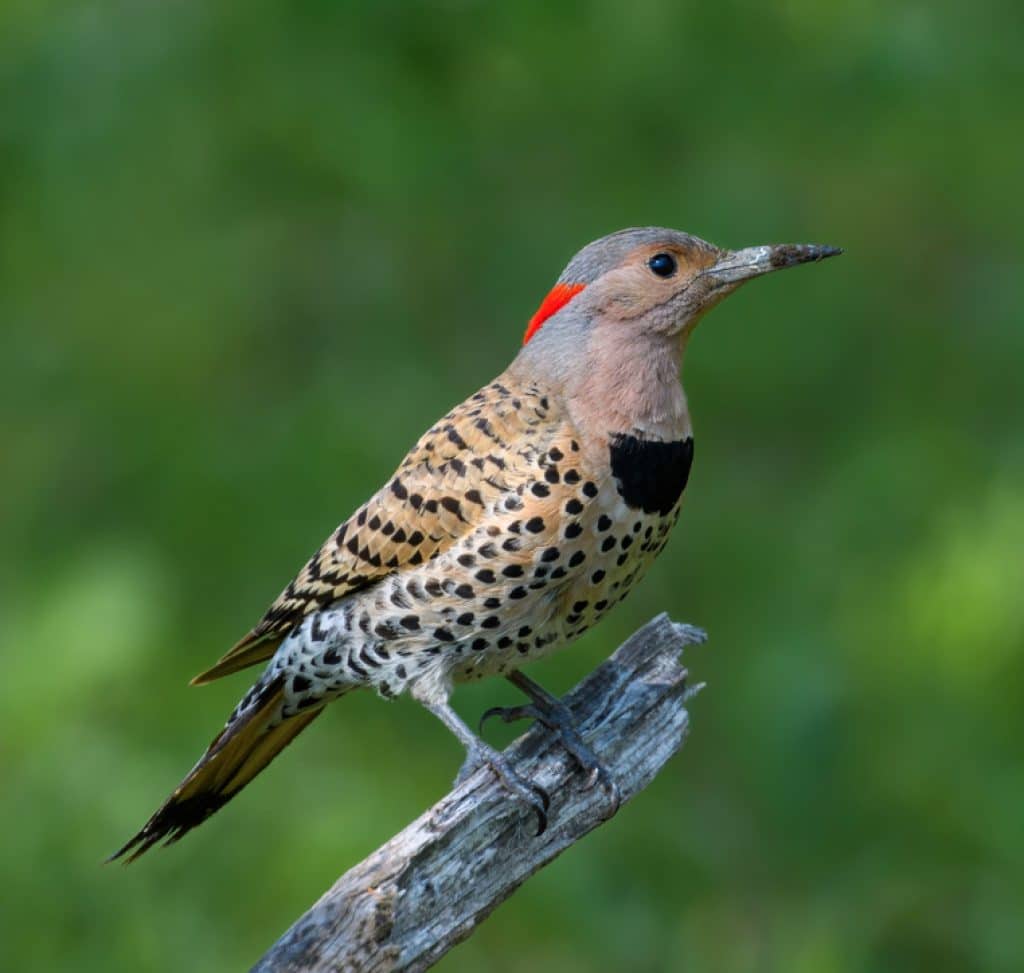 | Northern Flicker | (Colaptes auratus) | Across the USA and Canada, parts of Central America | Partial migratory | Brown with black bars, red nape patch (Yellow-shafted form), or gray cap and nape (Red-shafted form) | Similar to males but without the nape patch |
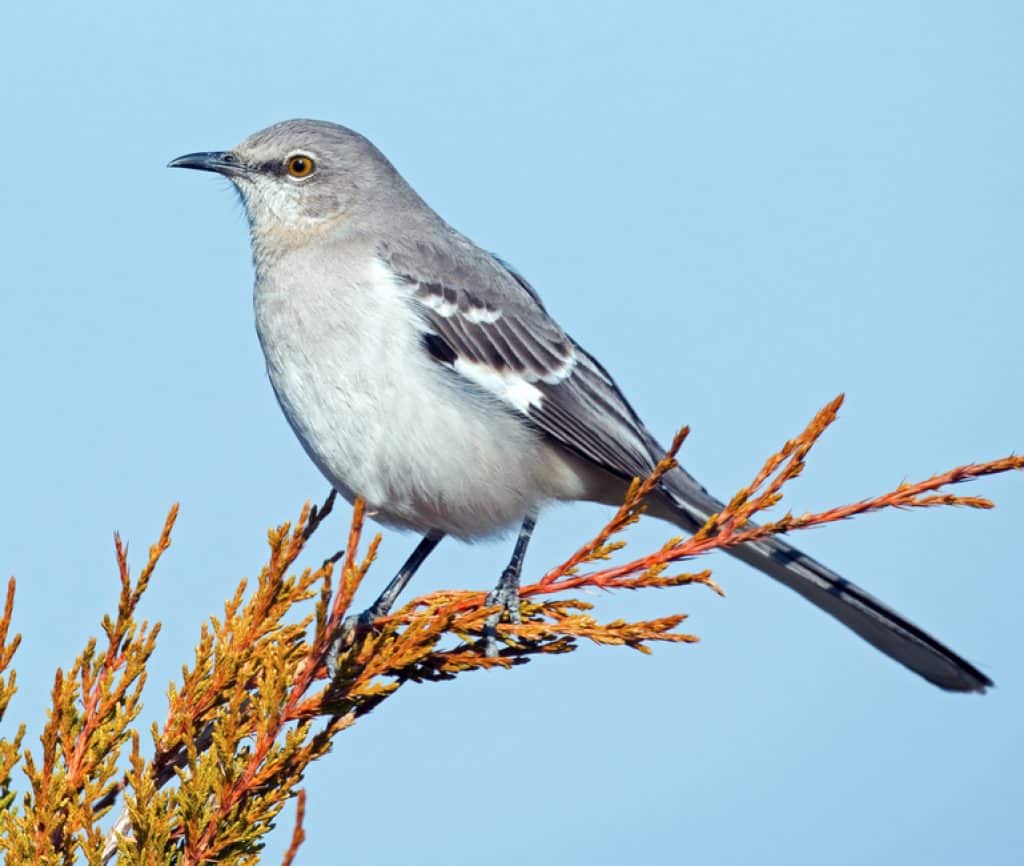 | Northern Mockingbird | (Mimus polyglottos) | Southern Canada, United States, northern Mexico | Non-migratory | Gray upper parts, white underparts, two white wing bars | Similar to males, very slight plumage variation if any |
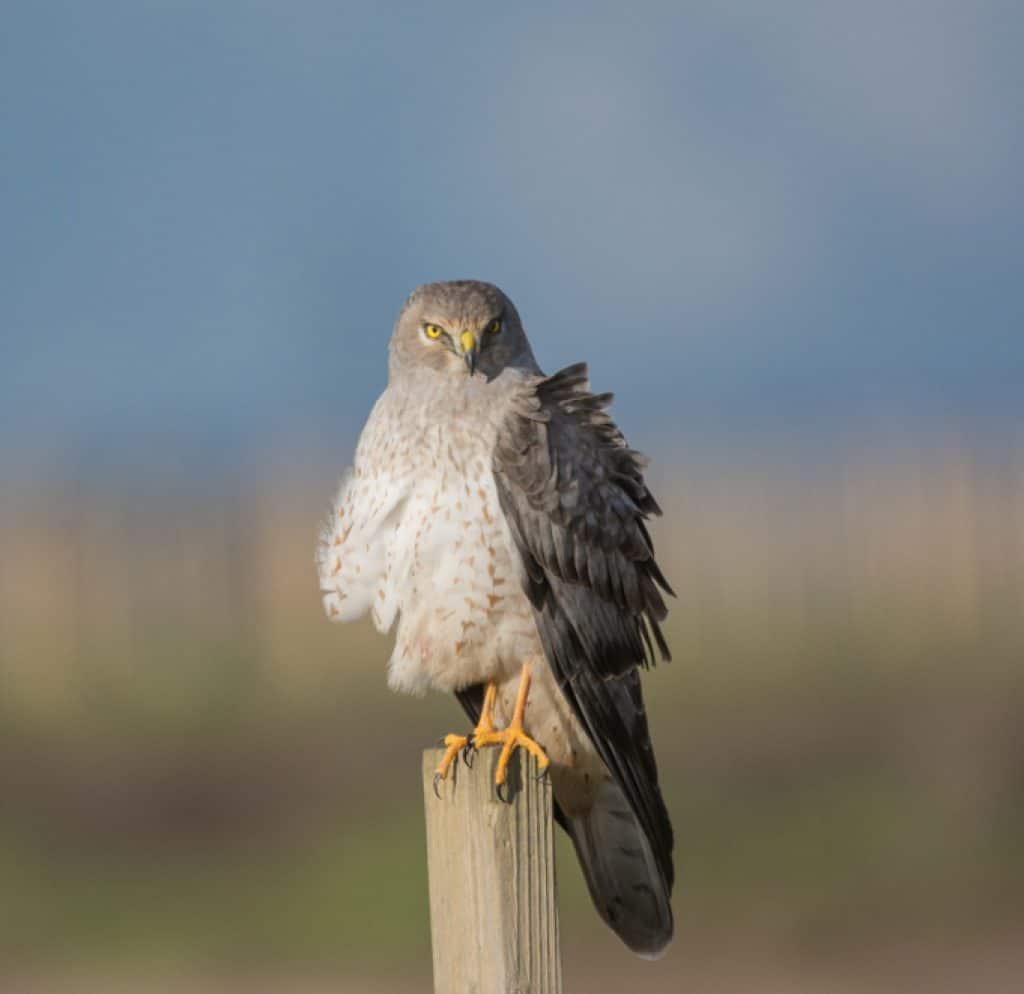 | Northern Harrier | (Circus hudsonius) | Across North America in marshes and prairies | Migratory | Gray upperparts and white underparts with black wingtips | Brown and streaked with white, distinct facial disc |
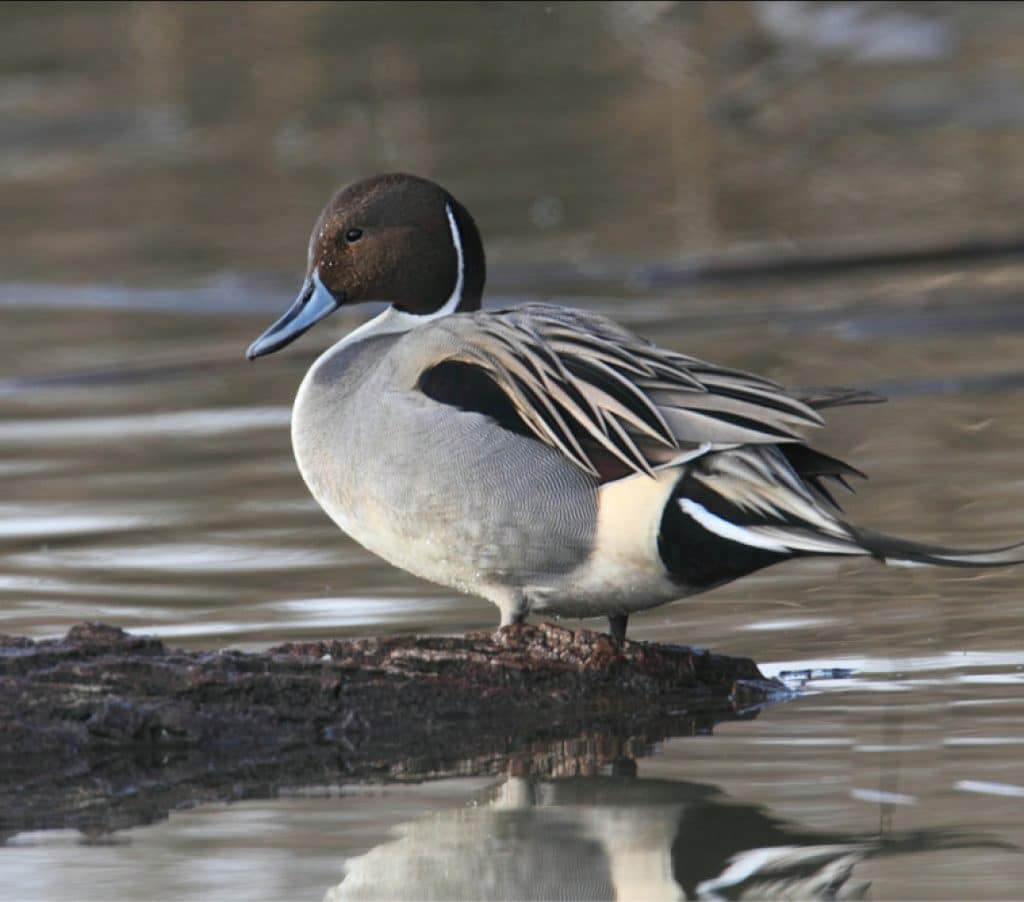 | Northern Pintail | (Anas acuta) | Northern regions of North America, winters to Central America | Migratory | Brown head, white breast, gray back, long black tail | Mottled brown overall with shorter tail |
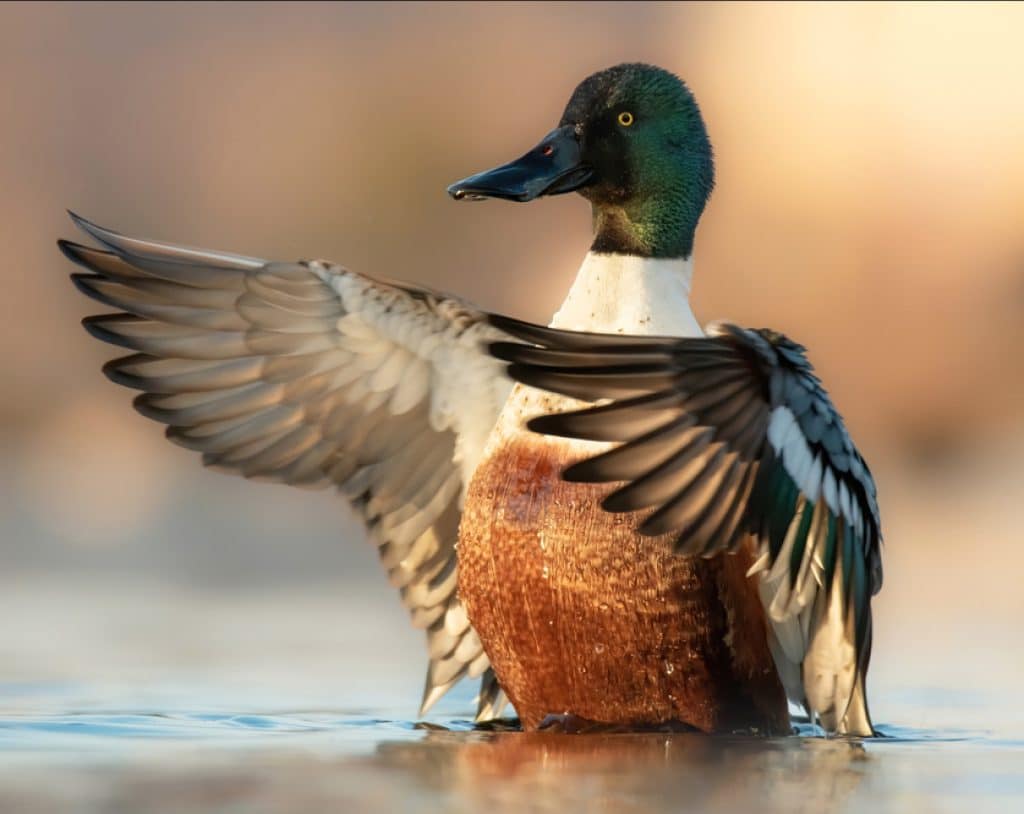 | Northern Shoveler | (Spatula clypeata) | Widely across North America, winters further south | Migratory | Green head, white chest, brown sides, and large shovel-shaped bill | Mottled brown with a less pronounced bill |
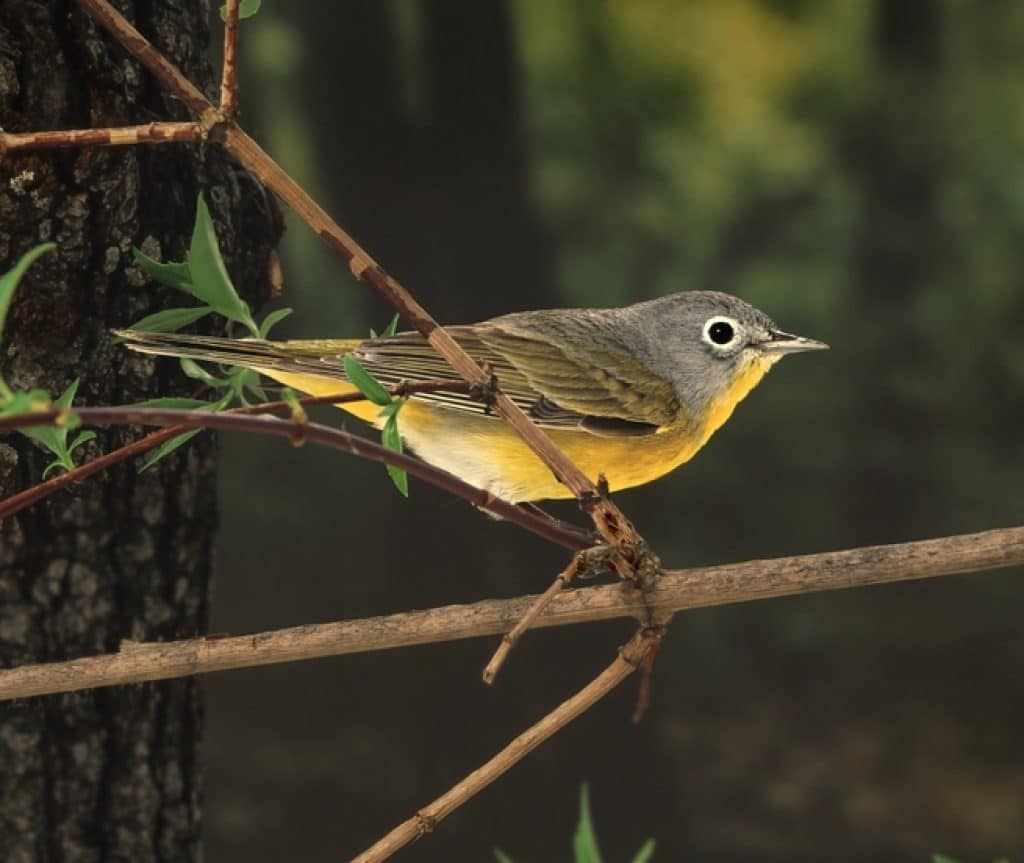 | Nashville Warbler | (Leiothlypis ruficapilla) | Eastern North America, parts of the Midwest and Canada | Migratory | Olive green back, yellow underparts, gray head with white eye rings | Similar to males but slightly duller |
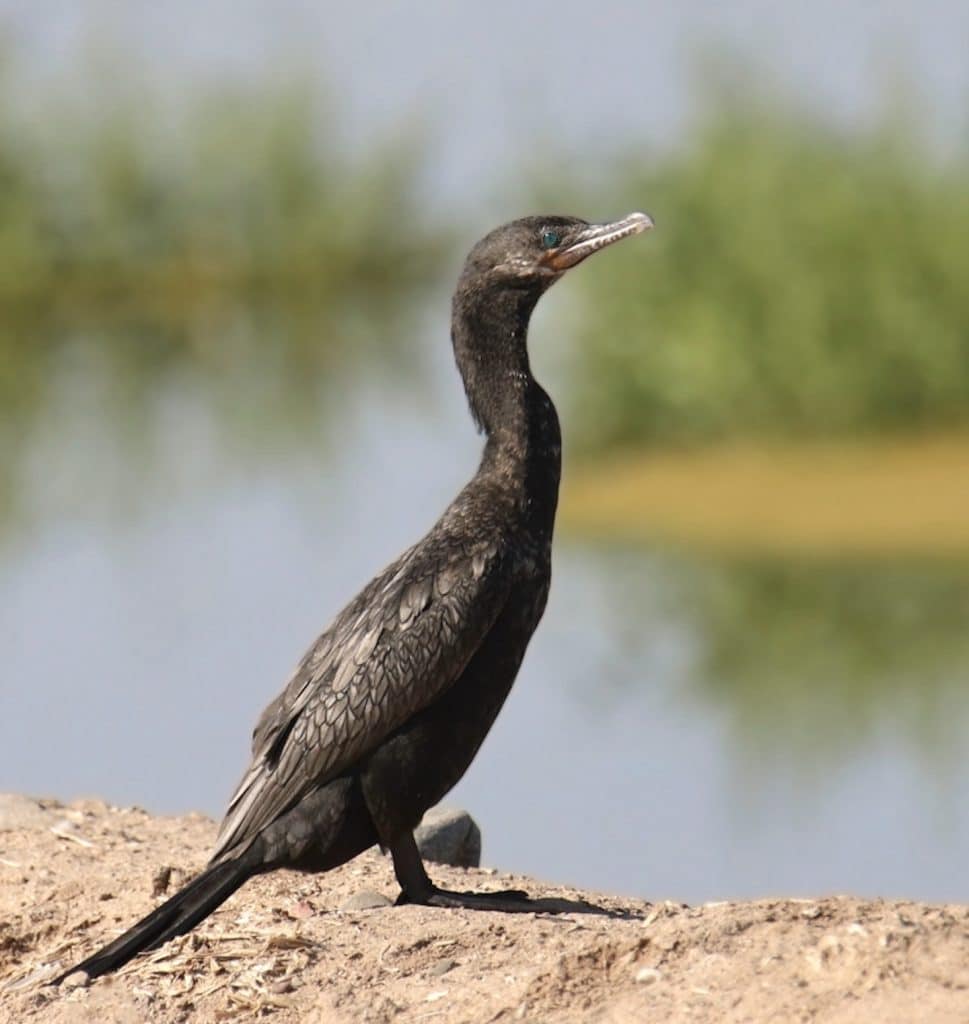 | Neotropic Cormorant | (Phalacrocorax brasilianus) | Southeastern coastal USA, inland waterways | Partial migratory | Black with some greenish sheen, long neck, and hook-tipped bill | Similar to males, possibly slightly duller |
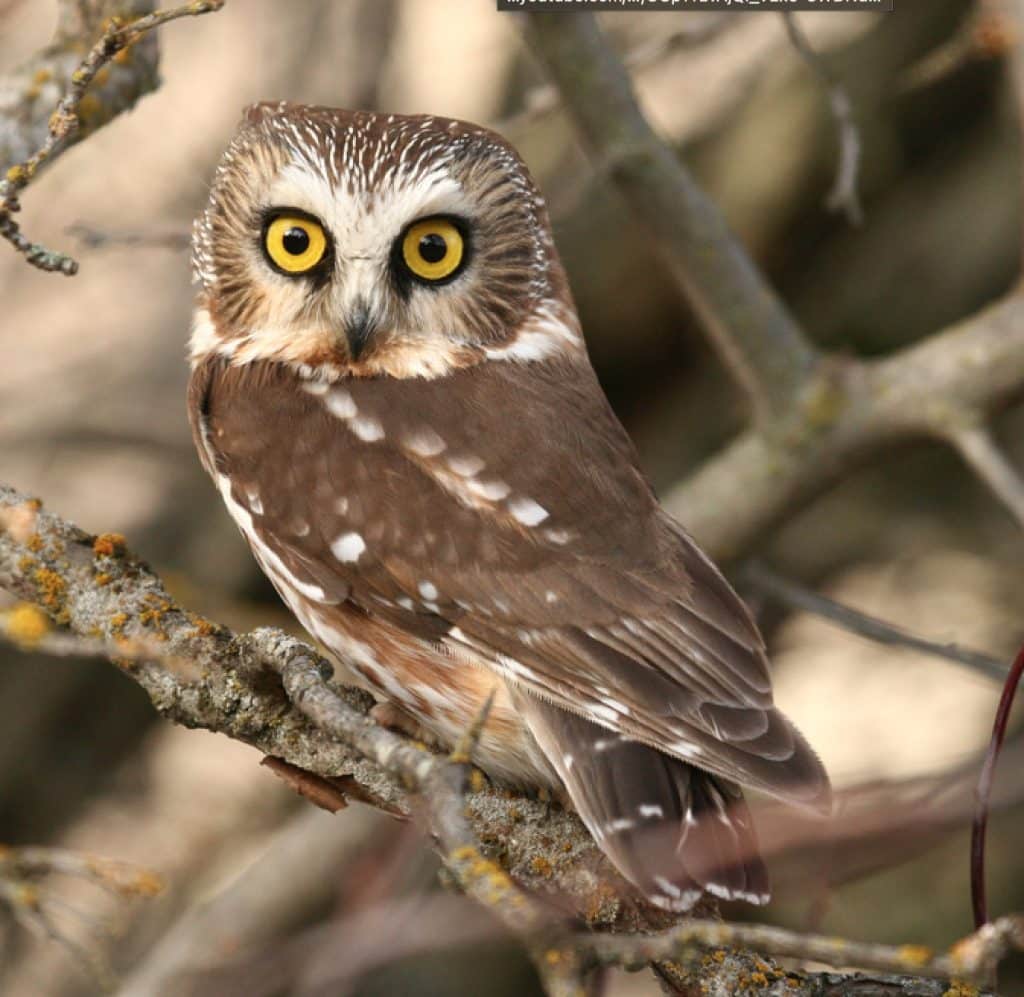 | Northern Saw-whet Owl | (Aegolius acadicus) | Forested areas across North America | Partial migratory | Brown with white spots on the head and back, white face with brown streaks | Similar to males, very slight plumage variation if any |
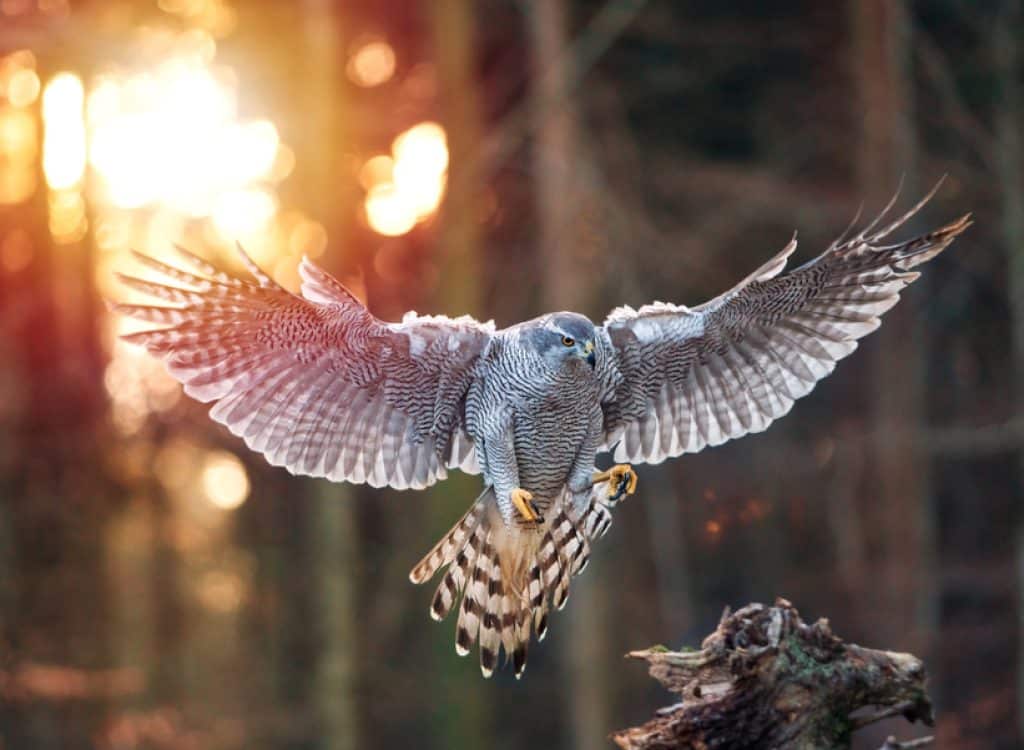 | Northern Goshawk | (Accipiter gentilis) | Forests across the northern USA and Canada | Partial migratory | Slate gray above, barred below, white eyebrow stripe | Similar to males but may have a browner hue |
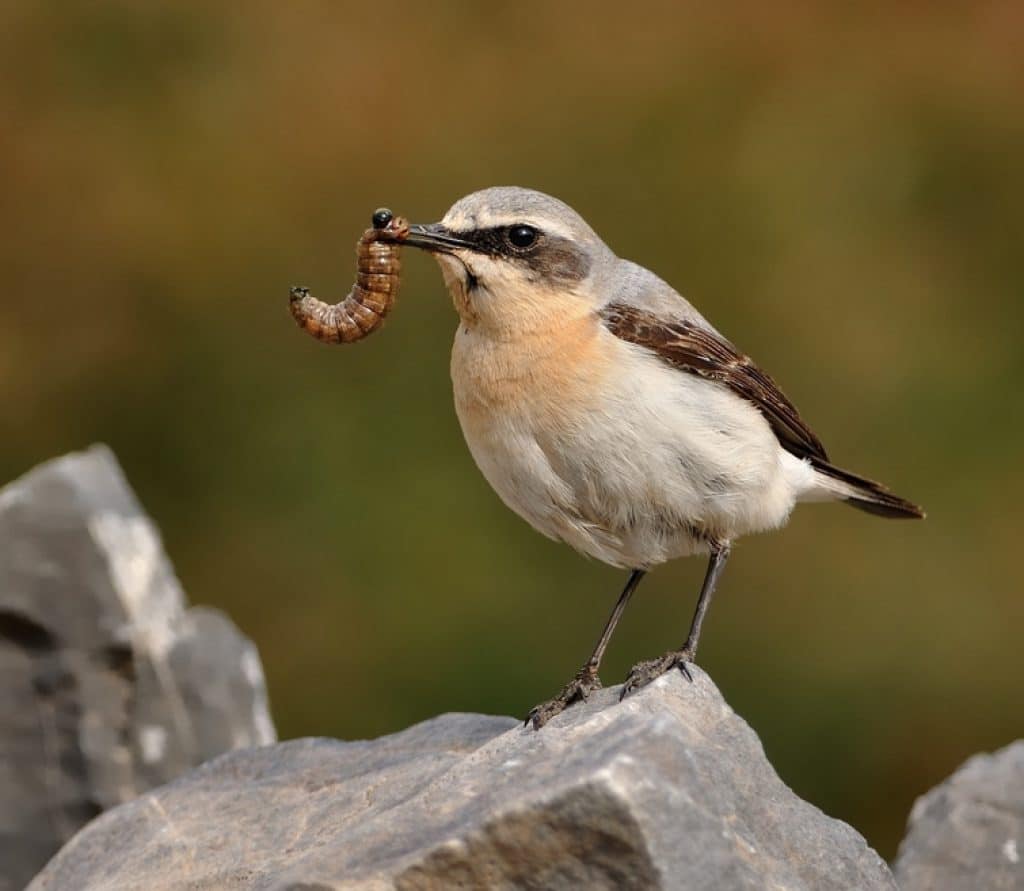 | Northern Wheatear | (Oenanthe oenanthe) | Northern Canada and Alaska for breeding | Migratory | Gray back, black wings and mask, white belly | Browner back than males, less distinct mask |
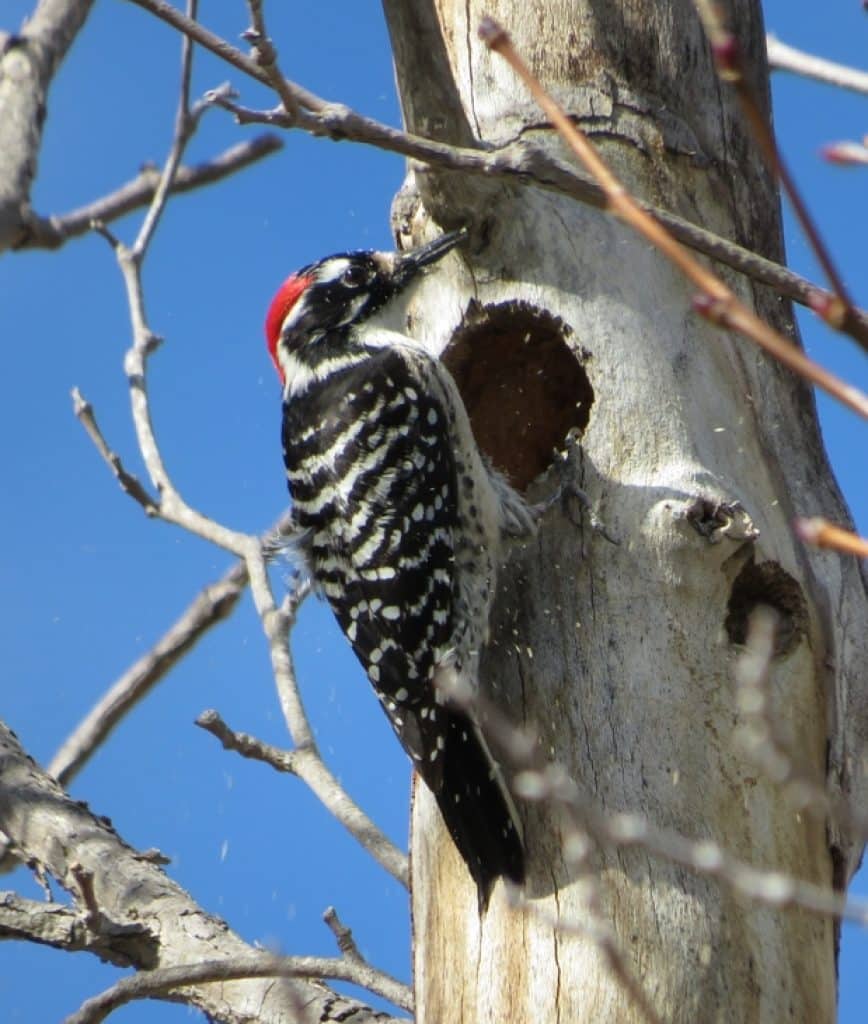 | Nuttall’s Woodpecker | (Dryobates nuttallii) | California, USA | Non-migratory | Black and white barred back, white underparts, red cap (only in males) | Similar but without the red cap |
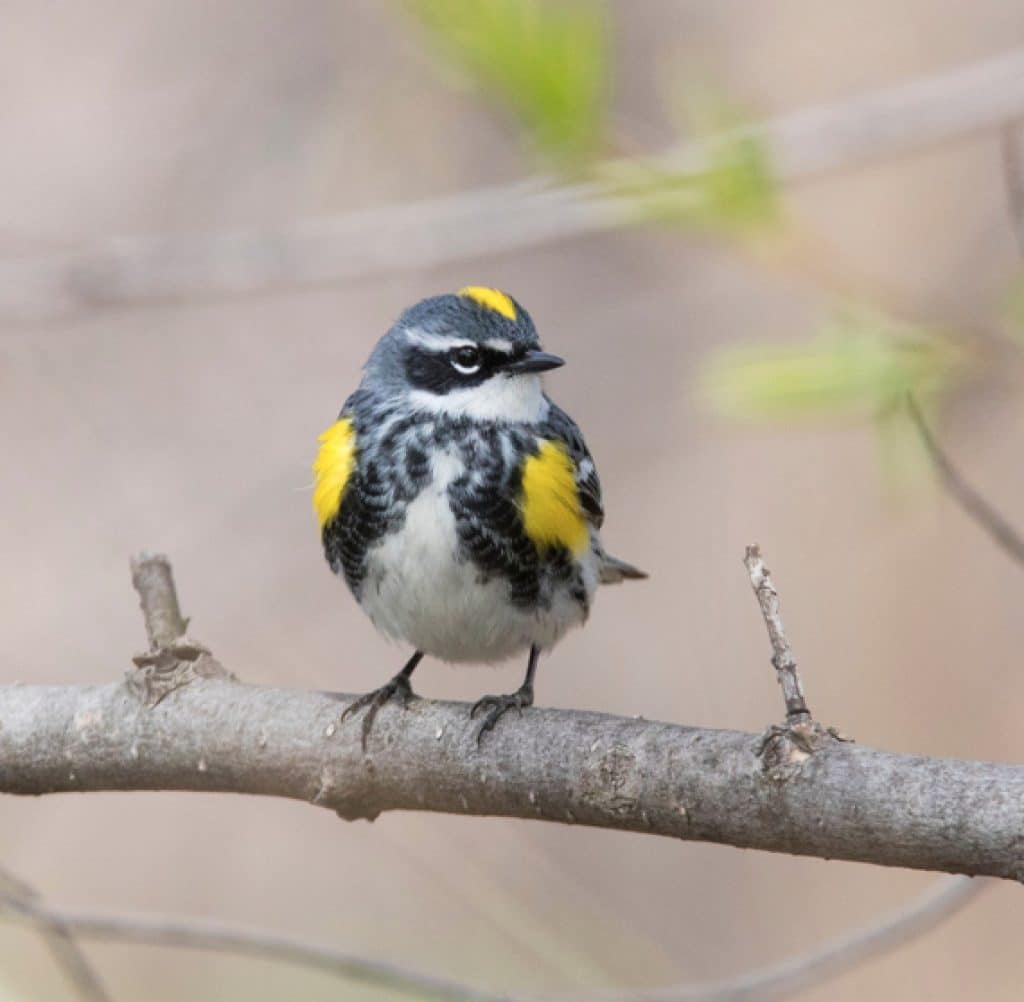 | New World Warbler | Various species within the family Parulidae | Across North America depending on species | Mostly migratory | Plumage varies widely among species | Typically duller and less colorful than males |
Classification and Taxonomy
Taxonomy serves as the foundation for understanding the diverse group of avian species. It classifies birds based on physiological similarities and genetic makeup.
This systematic approach allows ornithologists to identify and group birds with precision.
The taxonomic hierarchy starts broad and narrows down to specific, starting with the Kingdom Animalia, moving down through Phylum Chordata, and reaching Class Aves, which encapsulates all bird species.
Within Class Aves, taxonomy becomes more intricate with further divisions into Orders, Families, Genera, and ultimately Species.
As an example, consider the Nene (also known as the Hawaiian Goose), with the scientific name Branta sandvicensis. Its classification breaks down as follows:
- Order: Anseriformes
- Characterized by webbed feet and a flat bill, this order includes ducks, geese, and swans.
- Family: Anatidae
- This family comprises ducks, geese, and other waterfowl.
- Genus: Branta
- Black geese, including species like Canada Goose and the Nene, belong to this genus.
- Species:Branta sandvicensis
- The Nene, endemic to Hawaii, is a unique member of this genus, distinguished by its muted coloration and reduced webbing on feet.
Each taxonomic level groups birds by shared traits, ensuring that each species fits into the global bird family tree effectively.
Taxonomy is not static; advancements in genetic research continually refine avian classification.
As of now, there are approximately 40 recognized bird orders, each order comprises various families that house genera and species, like the Falco cenchroides, commonly called the Nankeen Kestrel.
Bird classification has global standards, one such example being the AOU Checklist by the American Ornithological Society, which remains a respected reference for avian taxonomy in North and Middle America, indicating the standardized approach to classifying these creatures.
Physical Characteristics
Bird species that start with the letter ‘N’ exhibit a diverse set of physical features.
Among them, the Nene stands out with its distinctive black face, neck, and feet. It sports a grayish-brown plumage which is a result of adaptation to the volcanic landscapes of Hawaii.
The Nankeen Kestrel presents another unique appearance. It is a medium-sized bird of prey with the following characteristics:
- Plumage: Predominantly white underparts contrast with reddish-brown wings and nape.
- Size: Moderate, fitting its medium-sized bird of prey classification.
- Wingtips: Dark, adding a notable elegance to its flight.
Birds within this category can show significant variations in size, color, and adaptations based on their habitat. Here are some examples in list form to highlight key features:
- Northern Bobwhite: A small, plump bird with a mottled brown, white, and gray body.
- Nankeen Kestrel: Features a slender build, allowing agile flight.
- Nicobar Pigeon: Known for its vibrant plumage, showing a spectrum of colors.
Each bird species starting with ‘N’ thus carries its unique set of physical traits, serving as a testament to the rich biodiversity within the avian kingdom. These physical characteristics can range from the subtle to the striking, all contributing to the survival and behaviors specific to each species.
Habitat and Distribution
Bird species that begin with the letter “N” have varied habitats and distributions, reflecting their unique adaptations and ecological roles. They are found across multiple continents and environments, showcasing a remarkable range of ecological diversity.
Continental Preferences
- Northern Goshawk: Widespread across the Northern Hemisphere, ranging from North America through Europe to Asia. Prefers dense forests as its nesting and hunting grounds.
- Nene (Hawaiian Goose): Endemic to the Hawaiian Islands and habituates volcanic terrains uniquely adapted to the local ecosystem.
- Nankeen Kestrel: Distributed across Australia, New Guinea, and Indonesia, this bird of prey favors open grasslands, woodlands, and savannas.
Environmental Adaptations
- Northern Goshawk: Exhibits adaptations for life in dense woodlands, such as powerful wings for agile flight through trees.
- Nene: Its morphology has been shaped by volcanic landscapes; it has reduced webbing on feet for walking on rough terrain.
- Nankeen Kestrel: Excels in arid to semi-arid environments, utilizing its keen eyesight to spot prey from perches or while hovering.
Diet and Feeding Habits
Birds beginning with the letter ‘N’ exhibit diverse foraging behaviors and diets, reflecting adaptations to their habitats and available resources.
The Nene, or Hawaiian Goose, primarily grazes on vegetation such as grasses and legumes, and may also feed on insects. It is often seen near shorelines and volcanic slopes where its food sources are abundant.
Nankeen Kestrel exhibits a versatile diet, mainly comprising:
- Insects
- Small rodents
- Small birds
- Lizards
Their hunting technique involves hovering over fields or perching to sight prey before a swift aerial pursuit.
Insectivorous birds such as the Nestor’s Vanga focus on:
- Insects
- Spiders
These birds employ sharp beaks to snatch their prey from foliage or the ground.
Feeding adaptations in birds are specialized. For instance, filter-feeders like the flamingo strain food from water using specialized beaks, while woodpeckers may drill into trees to access sap or insects.
It’s important to recognize that these feeding habits can vary seasonally and are subject to environmental pressures.
Reproduction and Lifecycle
Birds have a distinct reproductive cycle, starting with the mature adults engaging in courtship behaviors. These can include a variety of visual and vocal displays that are species-specific. The purpose of courtship is to attract a partner for mating.
After a successful courtship, mating between the male and female occurs. This leads to the fertilization of eggs.
The female bird then lays her eggs in a nest, which can range in complexity from a simple scrape on the ground to elaborately constructed structures, well-hidden from potential predators.
Egg Incubation
- Female birds typically lay their eggs in clutches, which can vary in size.
- The incubation period varies by species but is a crucial time when one or both parents will incubate the eggs to maintain the necessary warmth for chick development.
Chicks to Fledgling
Once the chicks hatch, they go through several stages:
- Altricial species: Born naked and blind, these chicks are entirely dependent on their parents for feeding and protection.
- Precocial species: These hatchlings are relatively mature and mobile from the moment of hatching and are able to feed themselves shortly after.
Regardless of their initial state, all chicks will eventually go through a fledging phase, where they grow feathers and learn to fly.
The duration from hatching to fledging varies widely among different bird species. It’s during this time that young birds learn critical survival skills, such as finding food and avoiding predators, before reaching full maturation and beginning the cycle anew.
Behavior and Social Structure
Birds exhibit a vast array of behaviors and social structures that vary from species to species.
The nuptial or breeding plumage often seen in birds is a key aspect of their behavioral dynamics, particularly in the context of mating rituals and attraction.
For instance, the Black-crowned Night Heron (Nycticorax nycticorax) demonstrates specific social behaviors during the breeding season. They typically nest in colonies, which could range from a few pairs to several hundred nests, indicating a complex social structure.
Other notable behaviors include:
- Roosting: Birds like the Black-crowned Night Heron roost in groups for resting, providing safety in numbers.
- Mobbing: This is a behavior displayed when birds collectively attack or harass predators.
Birds may also display various social interactions throughout their lifetimes, influenced by environmental factors and the necessity to survive and reproduce.
Each species has developed its own set of social cues and responses that allow them to communicate, establish hierarchies, and engage in communal activities.
The structure of these communities can be influenced by:
- Availability of resources
- Breeding season
- Predation pressures
Conservation Status and Threats
Bird species whose names begin with “N” experience a range of conservation statuses, from least concern to critically endangered.
Critical factors impacting their survival include habitat loss, climate change, and pollution.
Nankeen Kestrel (Falco cenchroides):
- Status: Not currently listed as threatened or endangered.
- Threats: Habitat destruction and use of pesticides can affect their prey abundance and nesting sites.
Nene (Branta sandvicensis):
- Status: Endangered
- Threats:
- Invasive species
- Disease
- Habitat destruction
- Human activity interference
Many bird species are listed under the Migratory Bird Treaty Act, indicating that they are facing population declines.
The U.S. Endangered Species Act has recognized 89 bird species as threatened or endangered, with an additional 342 species listed as Birds of Conservation Concern.
The International Union for Conservation of Nature (IUCN) provides a global perspective on the threats to birds, with comprehensive data on species at risk.
Conservation efforts for these birds are essential to prevent any further decline, involving:
- Habitat Conservation: Protecting and restoring natural habitats is vital.
- Regulation of Chemicals: Limiting the use of harmful pesticides and pollutants.
- Public Awareness: Educating on the importance of these species and the threats they face.
- Legislative Action: Enforcing laws that protect birds from illegal hunting and trade.
Each species’ survival relies on tailored conservation strategies and international cooperation.
Bird Watching Tips
To excel in bird watching, one should focus on learning how to identify birds effectively, understanding the optimal times for observation, and investing in the right equipment to enhance the experience.
Identifying Features
A birder’s ability to distinguish between species hinges on recognizing key identification markers.
These often include:
- Plumage Patterns: Look for distinct colorations, such as the Nashville Warbler’s yellow belly and olive-green back.
- Behavior: Differentiate species by their actions; for example, Nighthawks are known for their aerial feeding habits at dusk.
- Vocalizations: Birds like the Neotropic Cormorant have unique calls that can aid in identification.
Best Times for Observation
Bird activity varies throughout the day and year, thus:
- Dawn and Dusk: Birds like the Common Nighthawk are most active during these times, offering optimal observation opportunities.
- Migration Seasons: Timing visits during spring or fall migrations increases the variety of species one can encounter.
Equipment for Bird Watching
A birder’s toolkit is critical for a successful bird watching experience:
- Binoculars: An essential item with recommended specifications like 8x magnification and 42mm lens diameter for clarity and field of view.
- Field Guides: Carrying a field guide helps with instant information on birds like the Nene, with specific details regarding their habitat and appearance.
Frequently Asked Questions
In this section, one will find answers to common inquiries about birds whose names start with the letter ‘N’.
What is a common bird that begins with the letter N?
The Northern Cardinal is a common bird beginning with ‘N’. It is recognizable by its vibrant red plumage and melodic singing.
Can you list any white birds that their names start with an N?
The Nankeen Kestrel is predominantly white, with this bird of prey showcasing a striking contrast with its reddish-brown wings.
Which brown-colored birds have names starting with the letter N?
The Nene, also known as the Hawaiian Goose, is brown with distinctive black and white markings and is native to Hawaii.
What are some yellow-feathered birds whose names begin with N?
The Nashville Warbler, with its yellow belly and olive-green back, is a small songbird that starts with ‘N’.
Can you name any black birds that start with the letter N?
The Nubian Woodpecker, characterized by its black plumage and distinct red cap, is a bird that begins with ‘N’.
What are some blue birds that begin with N?
The Northern Potoo has unique blue-gray feathers. It is among the birds with names that start with the letter ‘N’.